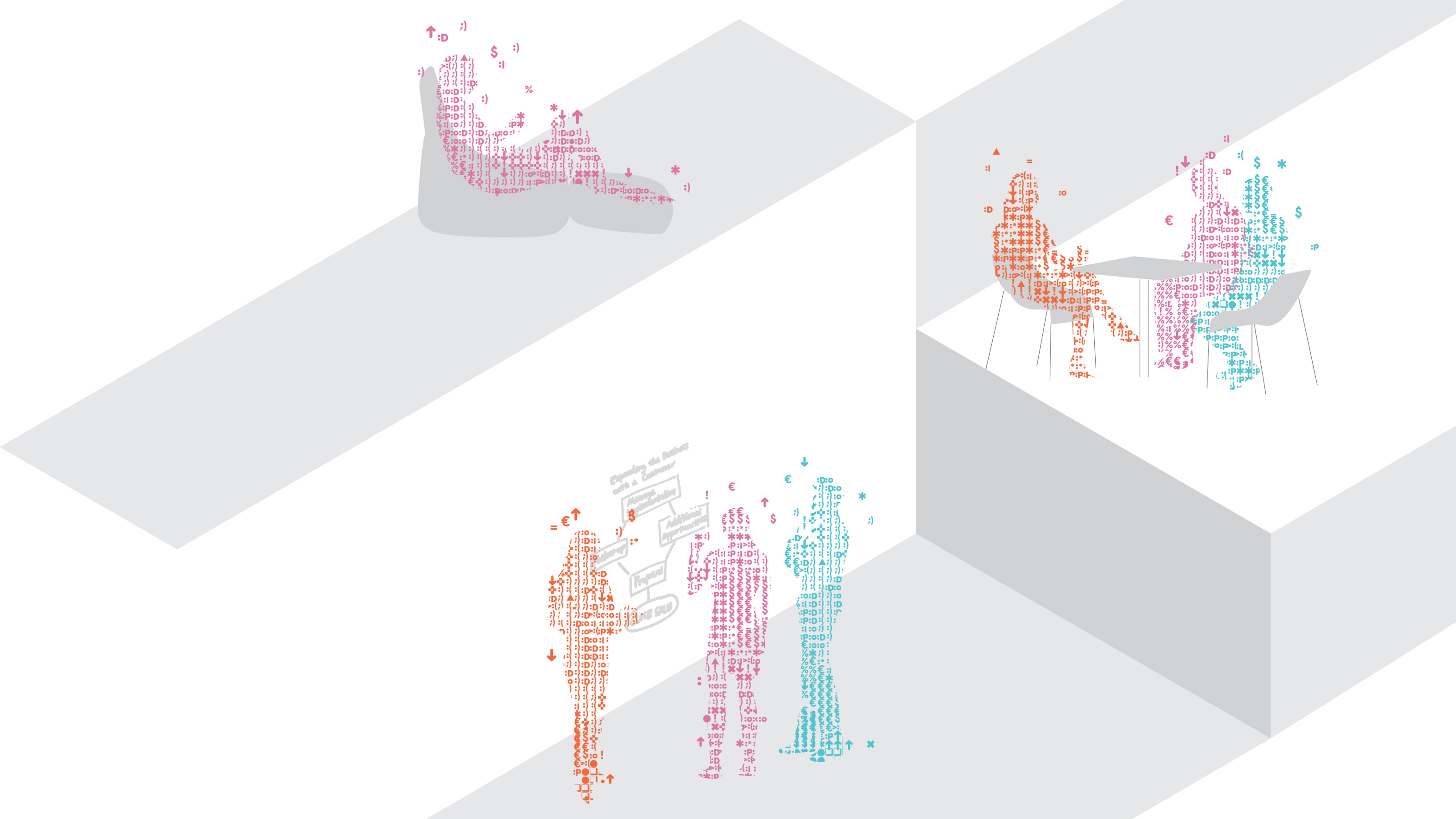
Wellbeing: A Bottom Line Issue
Steelcase Research
How Feeling Good at Work Drives Business Performance
When IBM asked CEOs around the world to identify the most important leadership traits needed today, their answer was resounding: collaborative, communicative, creative and flexible. CEOs are seeking “employees with the ability to constantly reinvent themselves. These employees are comfortable with change; they learn as they go, often from others’ experiences,” notes the study. Driving the need for these skills is the complexity of problems that organizations face today, and the demand for innovation is critical to drive bottom line results.
But here’s the new dilemma that CEOs face: collaboration, communication, creativity and flexibility are a set of behaviors that require leadership skills, metrics and mindsets that are different from what many business leaders have learned in the past. For decades, business schools churned out young leaders who were well trained in areas such as logistics, supply chain management, analysis and the like. Only recently are organizations recognizing that those business fundamentals aren’t enough on their own. They also need to create an environment and culture in which the necessary new behaviors can thrive.

Fostering creativity and innovation requires a new strategy that might take some business leaders by surprise—a rigorous focus on organizational and employee well-being. “The most successful organizations are now turning their attention to employee well-being as a way to gain emotional, financial and competitive advantage,” notes Tom Rath, Gallup’s leader of workplace research and co-author of the bestselling book “Wellbeing.”
Organizations have strong reasons to be preoccupied with physical wellness, given its clear connection to costs. Worldwide, rates of heart and lung disease, diabetes and obesity are rising sharply. The United Nations Food and Agricultural Organization (FAO) found Mexico has a 32.8% adult obesity rate, surpassing the U.S. at 31.8%. There are now about 1.5 billion overweight people in the world, and at least 25% of them are in China, according to the Duke University Global Health Institute. In Mexico, Type 2 diabetes is the leading cause of adult deaths, says a 2011 study by the World Economic Forum and Harvard School of Public Health.
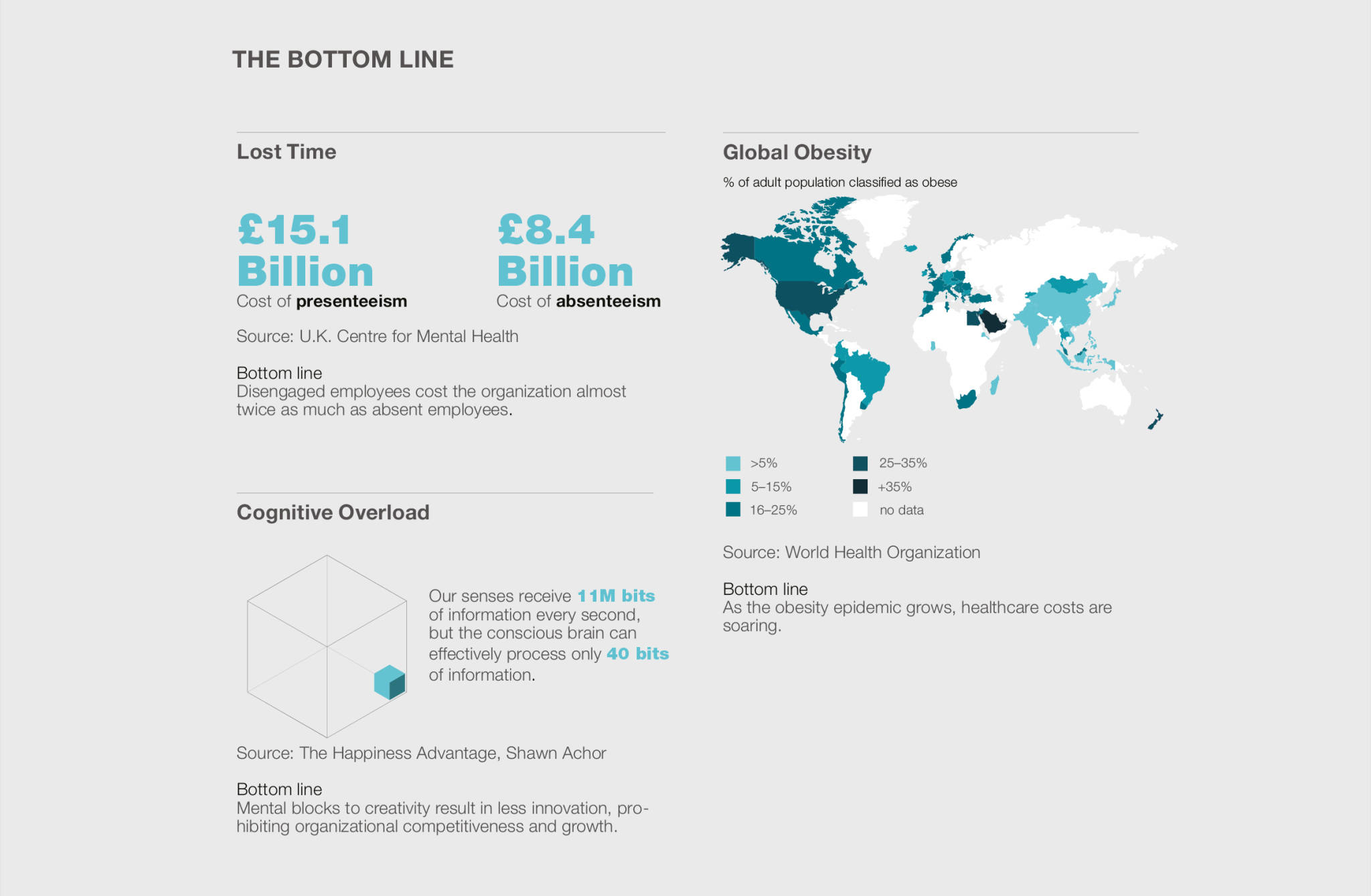
DOES YOUR WORK ENVIRONMENT UNDERMINE WELLBEING?
At a recent round table conversation on the topic of about the future of work, PopTech curator Andrew Zoli asked a packed room of people where they do their best work. The answer: not at work. People described great cafés, home offices and libraries that helped them to feel energized, focused and engaged. Only one person in the group praised her company’s recently redesigned office as a place where she felt a sense of purpose and vitality.
Business leaders disagree. While working remotely is a viable option for some workers, business leaders understand that it’s important for employees to feel connected to each other and with the purpose of their organization. Coming together in the workplace is what allows them to do that. The key is to create workplaces that are designed to be destinations that people want to be in because it helps them do their best work.
Steelcase’s ongoing research sheds light on what workers need to be creative and productive, and identifies some of the most frequent workplace culprits.
Leading organizations can make a significant impact – or hinder – their employees’ wellbeing by focusing attention on the physical environment. With a little effort, people can actually leave work feeling as well, or even better, than when they came in.
Privacy
95% say they need quiet, private spots for confidential conversations
40% say they don’t have them
Focus
95% of workers say having access to quiet, private places for concentrated work is important
41% workers say they don’t have access to quiet spaces
Getting the basics right
50% of workers report that they don’t have pleasing views
40% say they don’t have access to natural light
over 30% say their air quality is bad
37% workers lose up to 30 minutes a day dealing with physical discomfort
Respite
91% of people say they need casual spaces to re-energize
and yet more than half (51%) have no place to go within their workplace.
Six Dimensions of Wellbeing in the Workplace
The Steelcase team’s research synthesis identified six dimensions of wellbeing that can be impacted by the design of the physical environment. The foundational concept that links all six dimensions is what Steelcase refers to as an “interconnected workplace,” and which offers employees choice and control over where and how they work.
“To foster wellbeing, employees need to have a variety of work settings that they can choose from,” notes de Benoist. “Traditionally workplaces have been designed for efficiency, and sometimes take a ‘one-size-fits-all’ approach. But that doesn’t offer employees the ability to choose the right kind of setting for the work they need to do. When they have choices, employees have a sense of control that helps them feel more empowered, engaged and less stressed.”
Three key ways to offering this level of choice and control are:
Palette of Place
An ecosystem of interrelated zones and settings that provide users with a range of spaces that support their various modes of work.
Palette of Posture
A range of solutions that encourage people to sit, stand and move while supporting the multiple technologies they use.
Palette of Presence
A range of mixed-presence experiences (physical and virtual) in workplace destinations designed to augment human interaction.
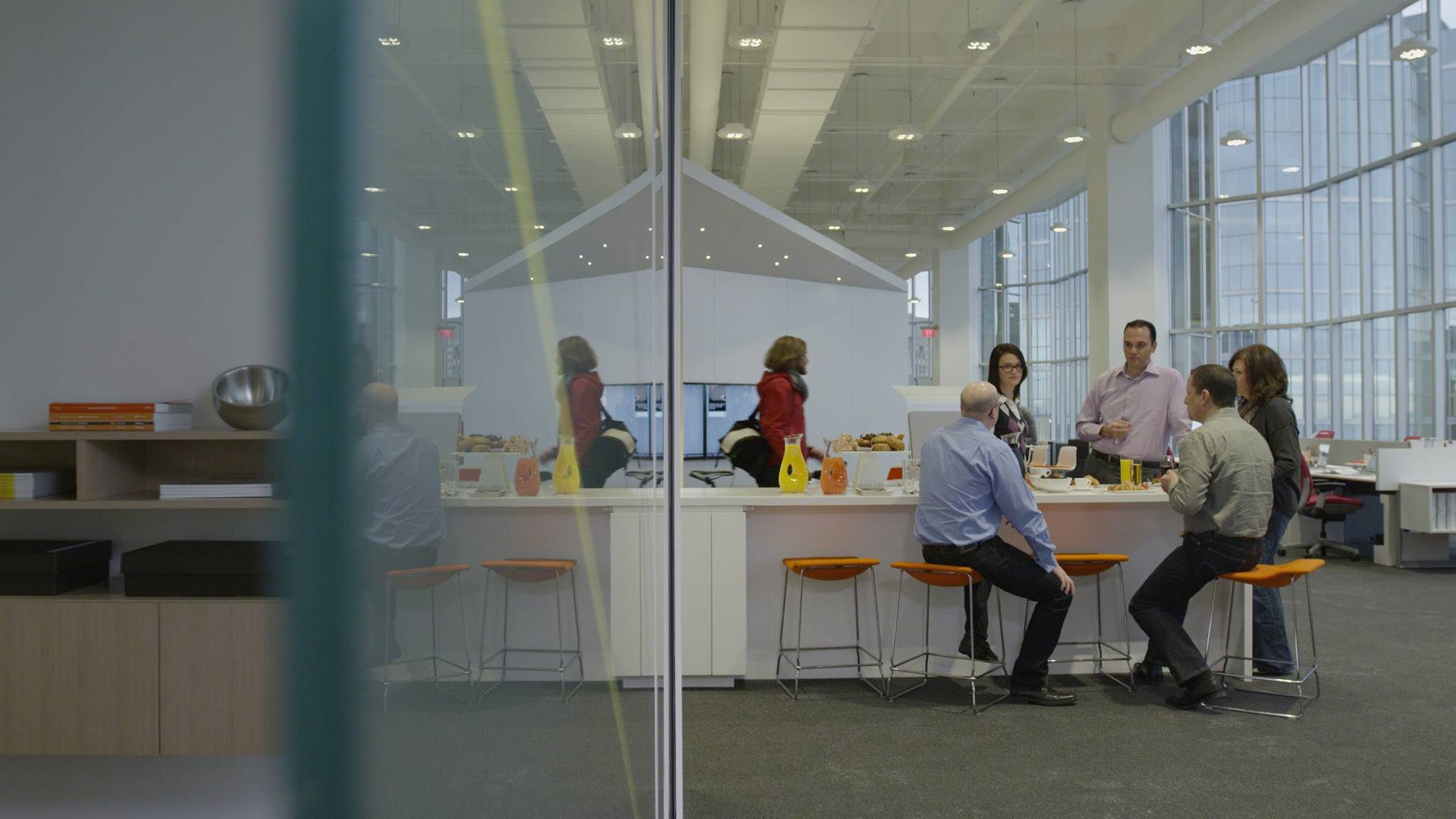
Optimism
Provide spaces that can be easily modified by individuals and teams to encourage experimentation, spark imagination and creativity, and expand possibilities.
Mindfulness
Create environments that support focus and minimize distractions for all tasks by providing a diverse range of settings that facilitate individual concentration, 1:1 connections, collaboration and team focus.
Authenticity
Allow individuals and teams to express their personalities through space by empowering them to select environments that best suit their preferred work styles. Encourage employees to display personal items in workstations and on their computers, tablets and smartphones.
Belonging
Provide spaces that encourage personal and professional connections. Ensure that spaces designed for users to connect with one another are intuitive and easily accessible for both co-located and distributed teams. Embed elements such as a media wall in the space to reinforce the importance of connections and the organization’s commitment to employees.
Meaning
Accommodate both co-located and geographically disparate teams by creating a palette of places and presences — i.e., settings for both physical and virtual collaboration. Provide social spaces to reinforce the importance of fun and social interactions and the company’s commitment to encourage these behaviors.
Vitality
Design spaces that encourage movement. Create a variety of indoor and outdoor spaces that offer posture choices (sitting, standing, perching, lounging) and encourage walking to create physical and emotional energy, stimulate the mind, improve alertness and improve focus.
PLANNING FOR THE DIMENSIONS OF WELLBEING
Attaining wellbeing at work is about creating and sustaining a healthy physical and mental state over time in a supportive physical and social environment. No single space can do this alone.
WELLBEING DIMENSIONS APPLIED
Project Studios
An immersive, shared space that supports project teams and small groups in analog and digital collaboration, content sharing and idea generation. Well-appointed to meet user needs around tools, hospitality, amplification and posture options.

Walls are leveraged as planes for analog and digital collaboration. Chairs swivel so workers can switch eye contact quickly between each other and multiple information displays.
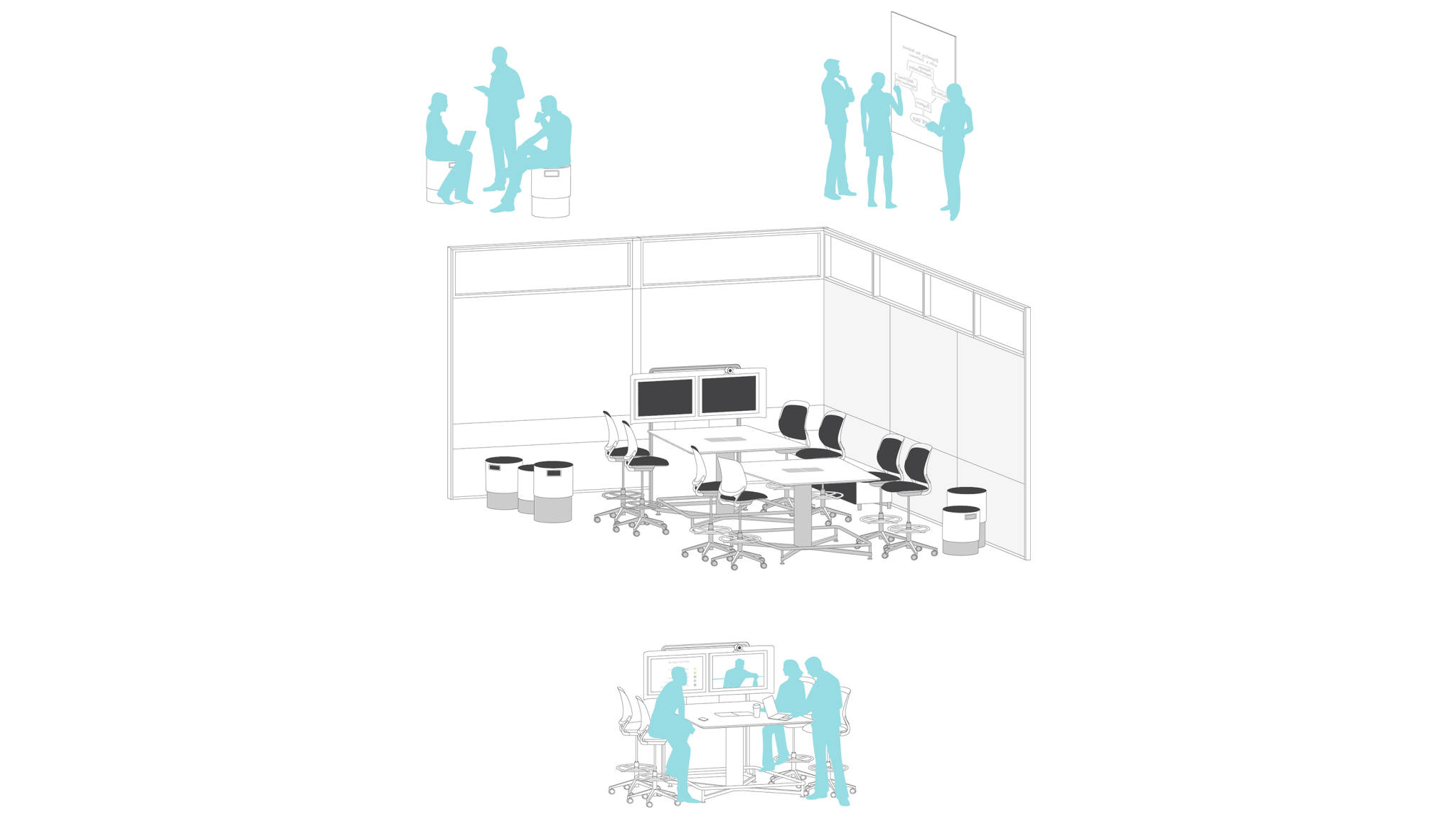
Well-situated high-definition telepresence and furniture amplifies the conditions for innovation by augmenting the quality and quantity of interactions for both physical and virtual participants.
Moveable seating provides informality and postural change. Using walls as vertical planes for displaying information increases mental capacity for dealing with complex issues.
Café
An informal and social setting to support connections, built trust and provide nourishment. Provides opportunities to connect socially and hosts mobile workers graciously to facilitate a sense of belonging, promote healthy professional relationships and bridge presence disparities.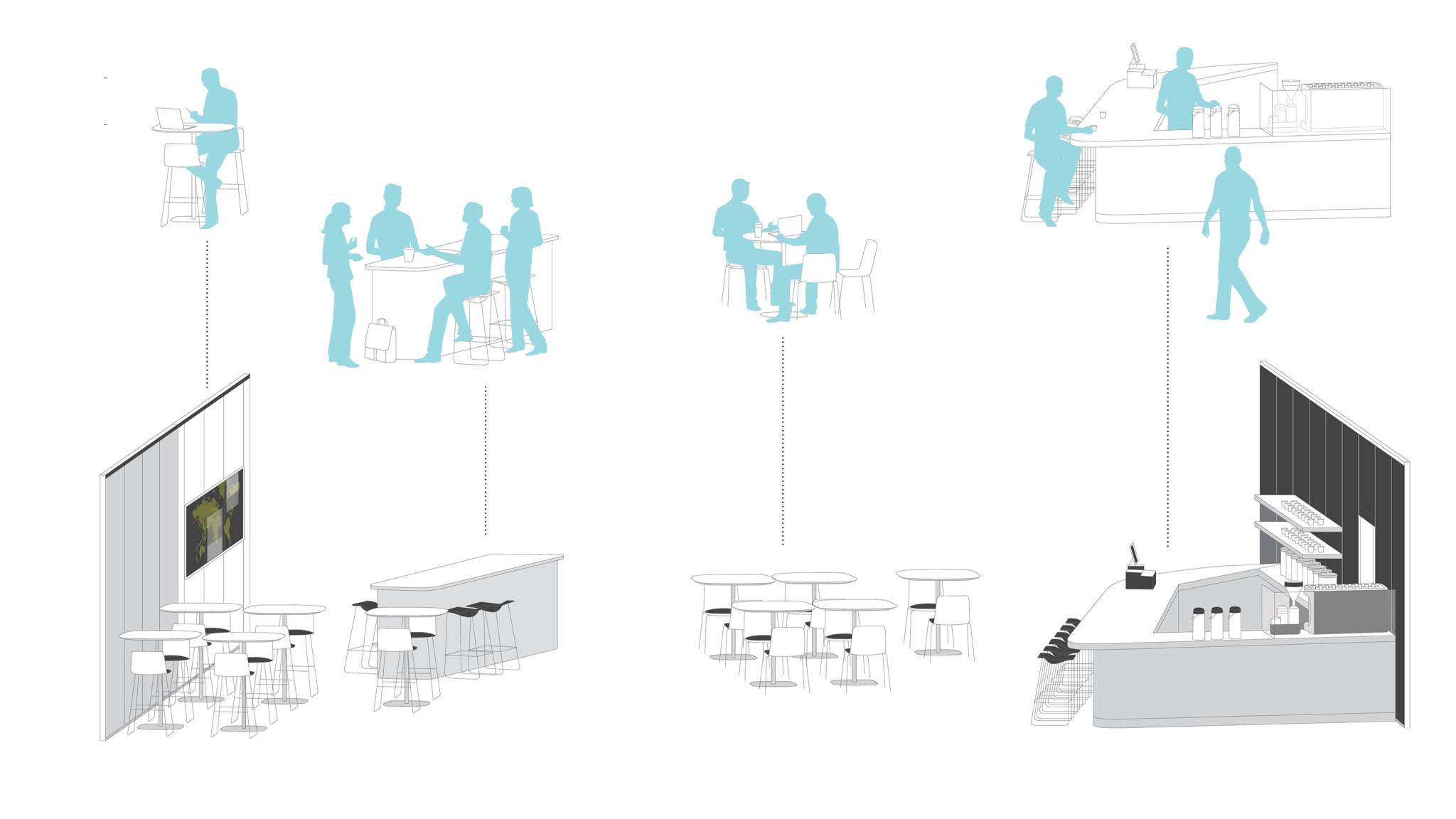
There is a variety of settings for socializing or meeting informally.
Nomadic Camp
An area for mobile users with a variety of settings that welcome and accommodate focus and collaboration. A palette of place and posture options provides solutions for mobile and geographically disparate users to feel a sense of belonging, community and connection to the brand and culture. Shared spaces welcome users and allow for personalization and self-selection, giving a sense of pride and temporary ownership.

Private Office
An owned space that provides the ability to express one’s self and display personal items and professional artifacts. Users are empowered to utilize the space in the best way to support their individual needs through amplification, making work visible on the walls or providing solitude for focus.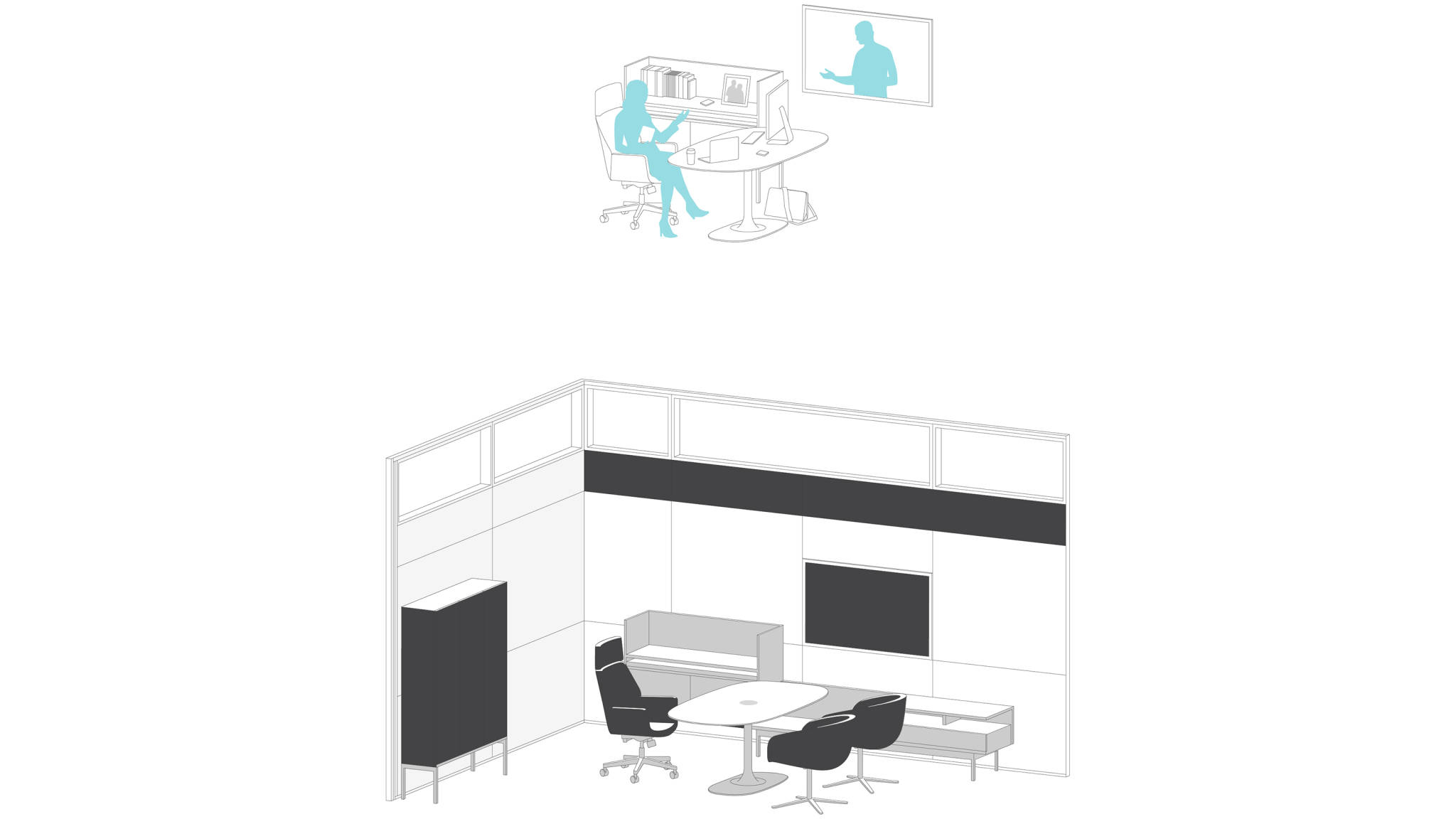
Acoustically sealed, the space supports quick switches from individual focused work to 1:1 connections and interactions.
Patio
A setting that offers inspiring views, access to nature and a palette of place, postures and presence options. Promote movement through the environment by encouraging users to select the right place for a given task. A variety of settings support user needs throughout the day, from focus to respite to collaboration.
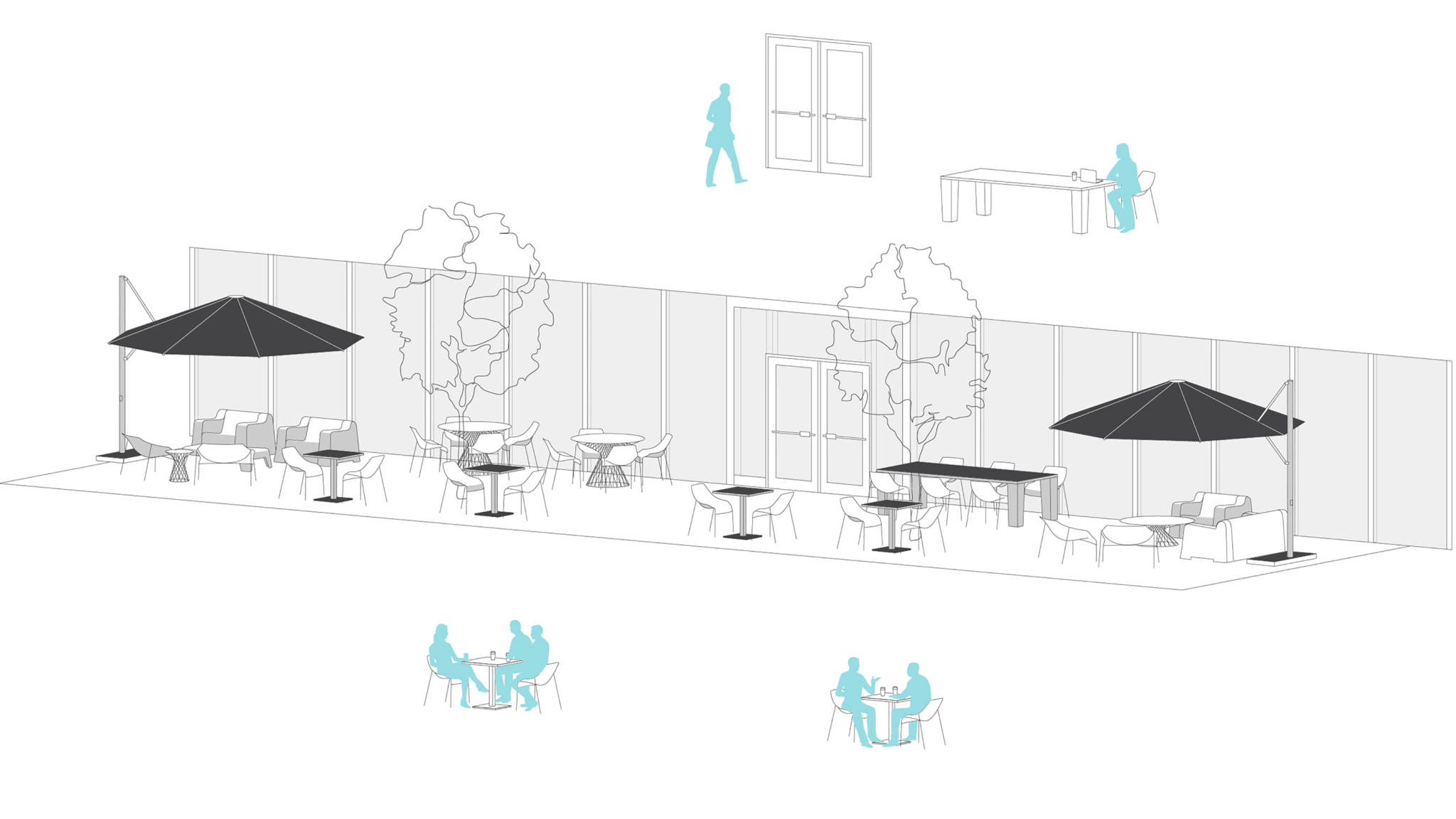
Retreat
An informal place that enables people to be alone with others nearby or have informal interactions within the hum of surrounding activity. Provides great views to the outdoors and displays of organizational artifacts.
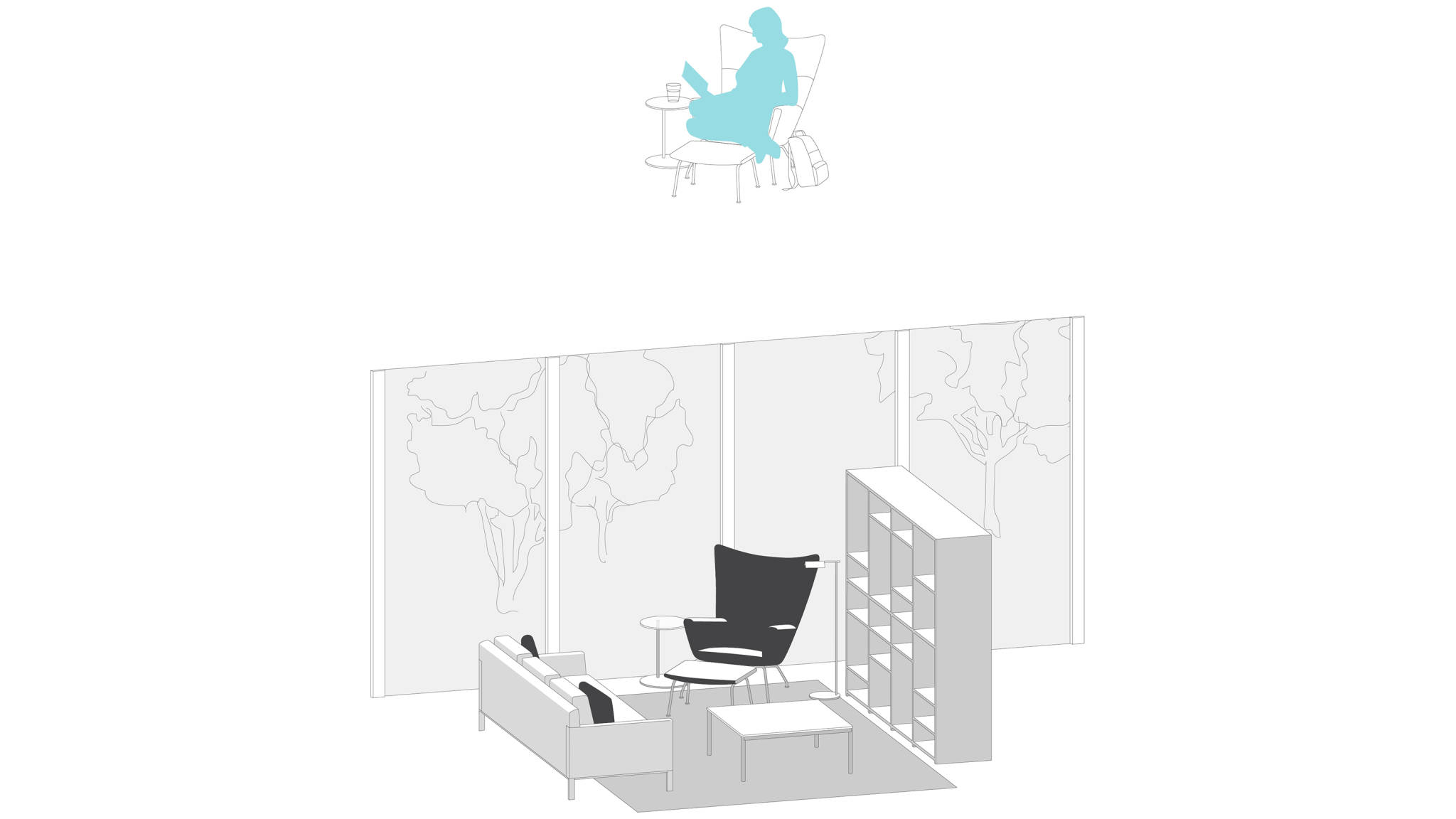
Those who aren’t comfortable in a high-sensory environment can come here to dial down the stimulation around them.
Innovation Suite
A space to fine-tune imagination, spark creativity and foster critical thinking. Inspire, engage and support evolving innovation processes and serve as a symbolic and tangible expression of a company’s commitment to a culture of innovation.

Enclaves
Small, private spaces that provide respite, focus and rejuvenation. Easily accessible with good visual signaling.
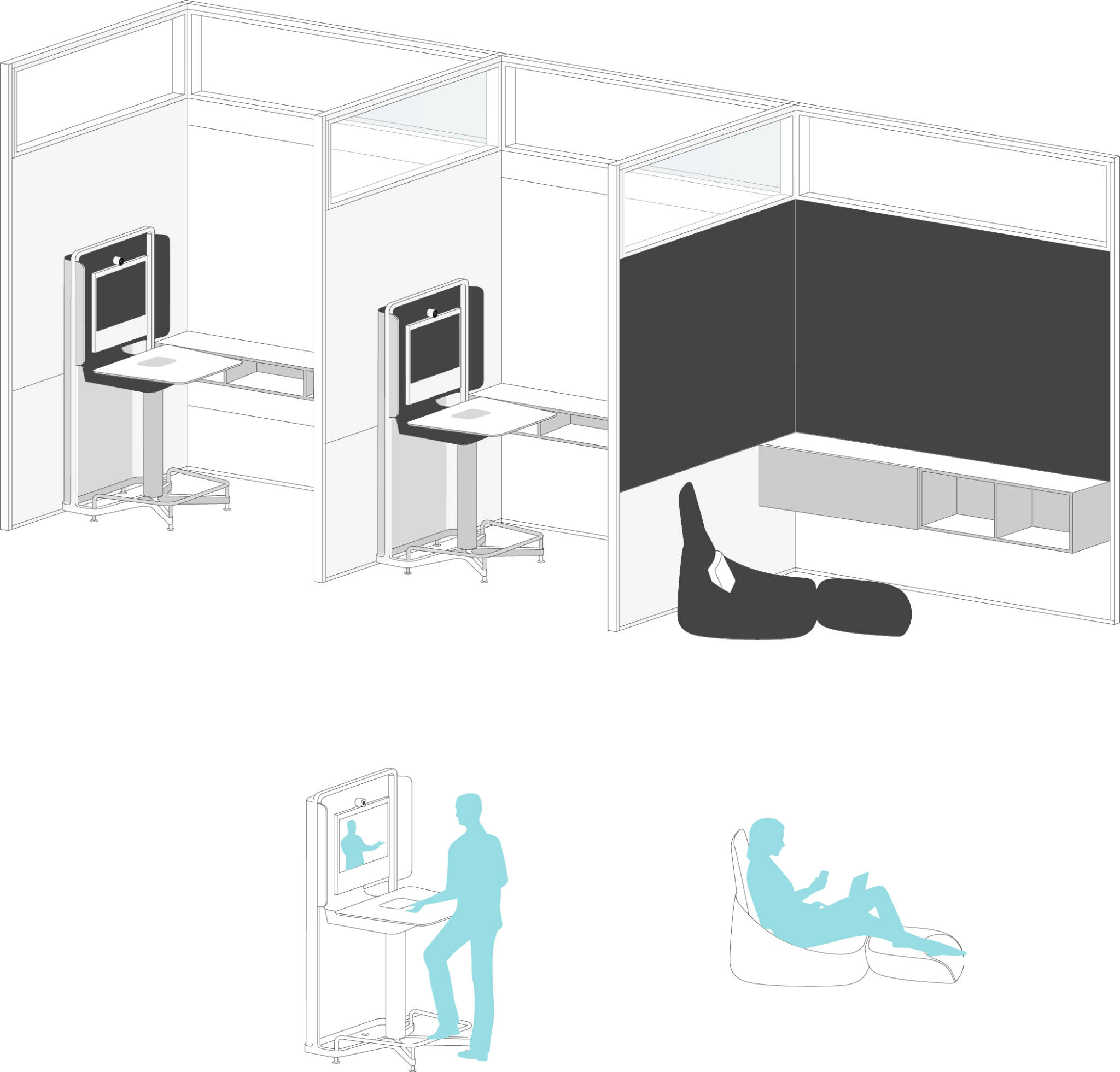
Resident Neighborhood
Owned individual space with supportive tools and personal control. Users can personalize their workstations and adjust for comfort. The overall zone supports a range of user needs, from focused work to collaboration to touch-down tasks, allowing the worker to choose where they feel most productive.
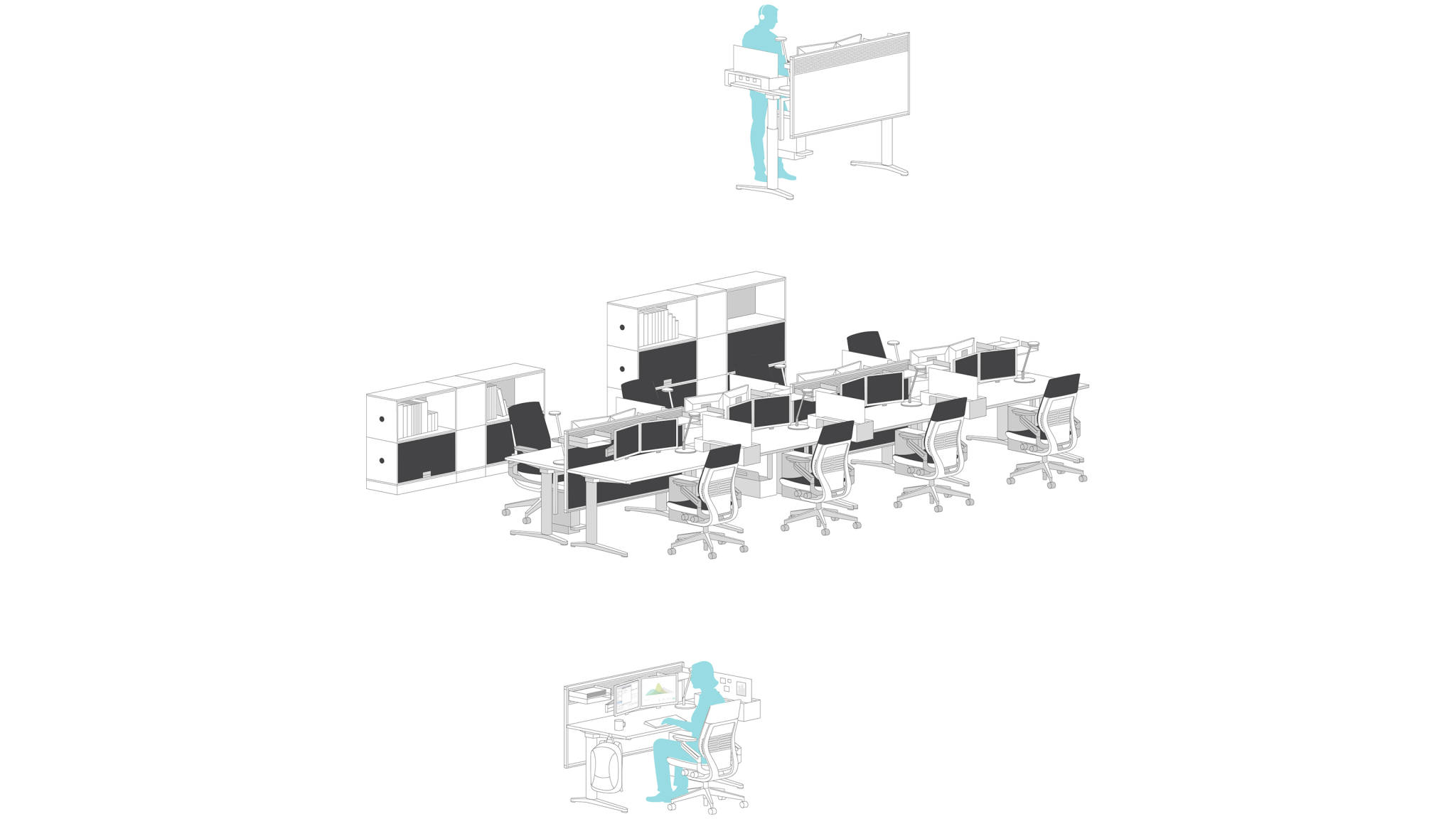
Personal storage cubbies and hooks at each workstation reduce clutter and act as a boundary between workers. Height-adjustable worksurfaces promote healthy movement and mental alertness, while also recognizing workers’ individual physical needs and preferences.

